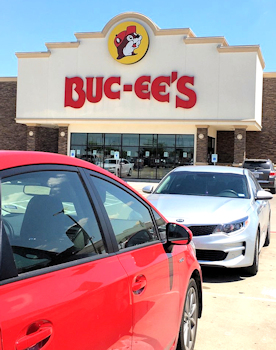
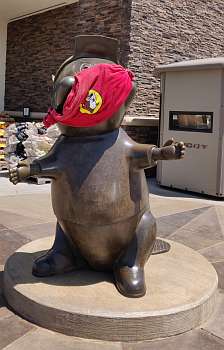

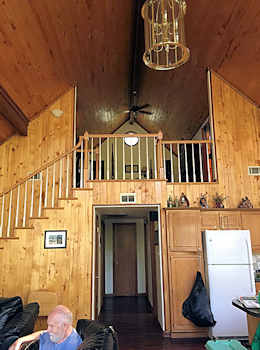
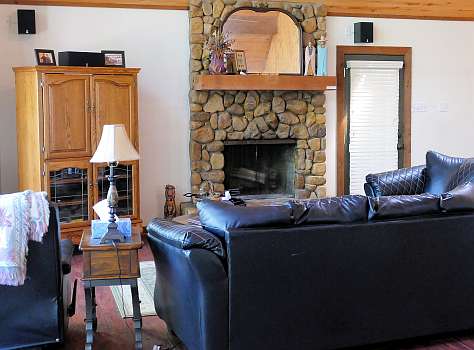
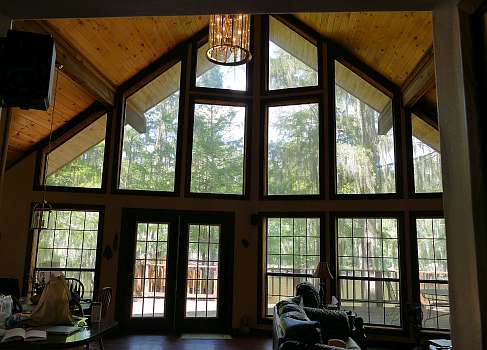
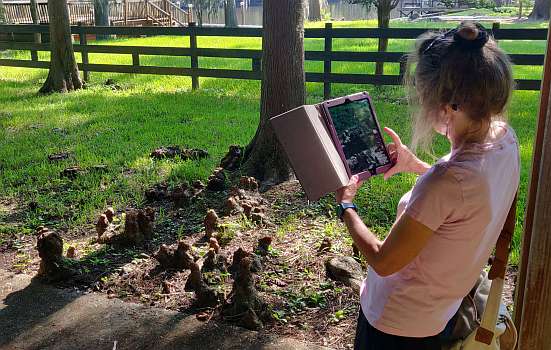
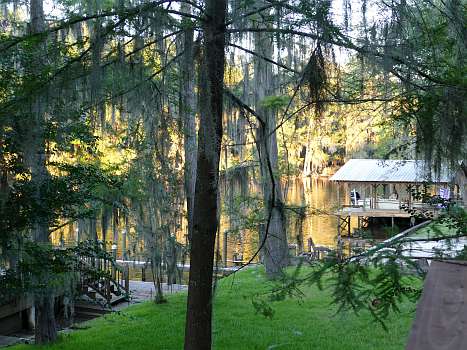
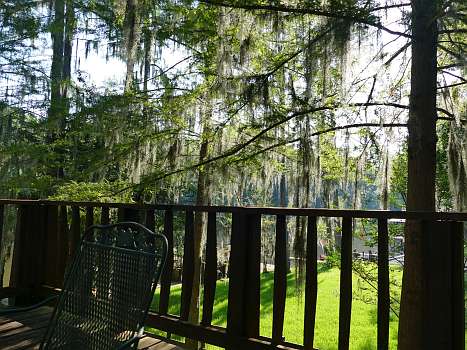

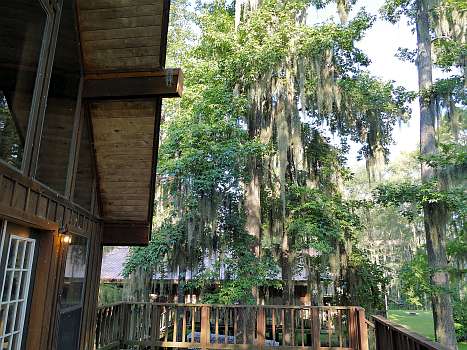

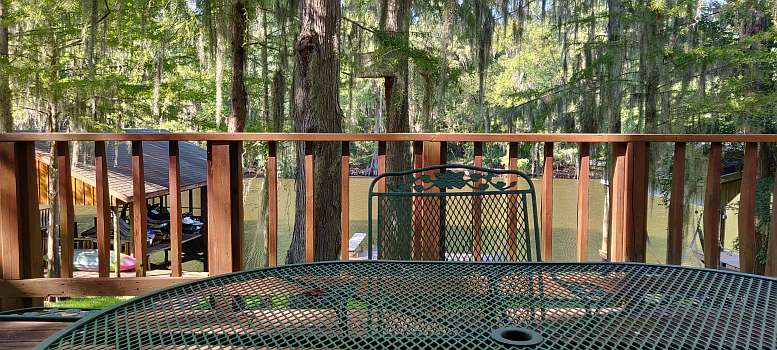
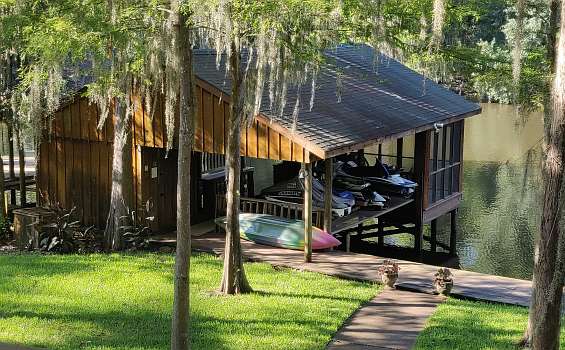
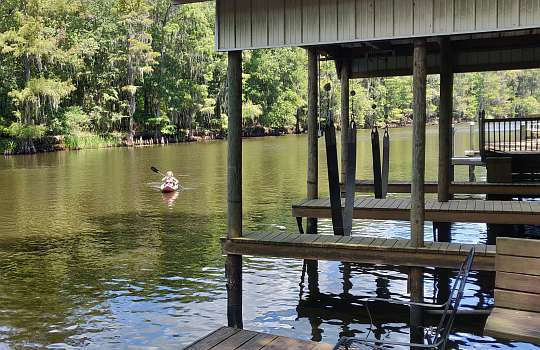
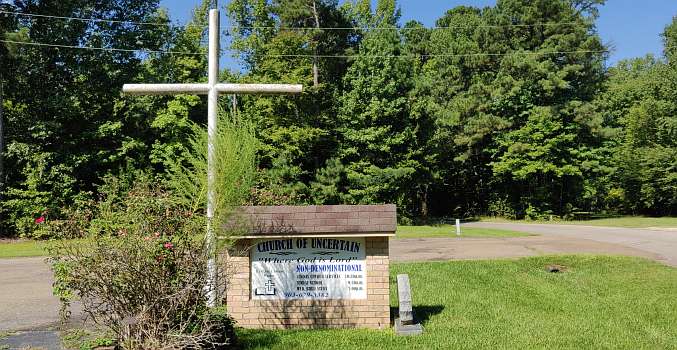
Louise and I once had big plans for this summer. First, we booked a vacation to fly to Vancouver and then take a train to Lake Louise in Canada in July but then the border was closed because of the pandemic. So then we booked another trip to Rocky Mountain National Park in Colorado but then Covid rates started to tick up, so we cancelled that one too and decided to spend our vacation sheltering in place, subsisting on crumbs out of the dumpster. Our lives shriveled up.
In response to our woeful state, Antonia and Mary decided that we needed to get out of the house, so they took appropriate measures. First, they found an AirBnB at Caddo Lake, which is in far-east Texas, about a six hour drive from Austin. This they reserved for a long weekend - August 20 through the 24th. They then told us that by God we were going with them to the house, that they would provide and cook food for us while we were there (to give us a break from eating at the dumpster), and that we would have a good time there. Well, OK! we said.
Caddo Lake is a fascinating place. It is named after the Caddo indians, who used to live there before being driven off the land by another tribe. It is the only natural lake in Texas. It was probably created in the New Madrid earthquake of 1811 - the strongest earthquake ever in modern US history. It also received a boost from "the great raft" - a huge logjam that had been building up for hundreds of years and that at one point was over 100 miles wide, and which is thought to have raised the level of the lake by five feet. This allowed boats to bring merchandise up from New Orleans, through the Red River and into Caddo Lake. We saw photographs of paddlewheel steamers that made this trip and they were pretty substantial boats. The town of Jefferson became the final terminus of this traffic.
Of course, everything comes to an end. The log jam was causing widespread havoc and so by the end of the nineteenth century, it had been completely dismantled. As a result, the level of Caddo Lake fell back so the traffic to and from New Orleans was no longer possible. The lake is still navigable, but the average depth is only three feet and you have to know where you are going. Jefferson has gone from bustling port to tourist destination.
So now the lake is no longer a hub of commerce but a place for relaxation. Part of the charm of the lake is that it is full of bald cypresses. These are picturesque trees that grow only in water. They are deciduous conifers, an unusual combination, and the ones in and around the lake are covered with Spanish moss, giving them an other-worldly charm. They also are home for a great variety of birds, and they are the state tree of Louisiana.
Another charming oddity near we were staying was the (very small) town of Uncertain. According to one tradition, the town derives its name from the original application for township where the name for it had not been decided. Therefore when the original residents filled out the application they put "Uncertain" in the blank for the name. When the township was created, it then became "Uncertain". But other stories exist as well - for example, reflecting some doubt about exactly where the Texas/Louisiana border lay, as well as confusion on the part of mariners over where the proper location of the town's mooring was located.
Another claim to fame for Uncertain is that, in 1966, several scenes from the film Curse of the Swamp Creature were filmed in the town. We kept an eye out, but luckily there was no sign of the Swamp Creature.
The drive up to Caddo Lake took us about six hours, with a little extra to replenish our supplies at Buc-ee's. The house was on a long thin peninsular into the lake. It was constructed on stilts for protection against flooding. We saw the high water mark from 2016, which was three quarters of the way up the stilts. I figure that the base of the stilts is still maybe 25 feet above the current water level, so it must have been one hell of a flood. The house itself was big, with three bedrooms and a vaulted ceiling over the main living space. Out back was a large deck to sit out on or to dine on. Steps from the deck led down to the boathouse, which had five jetskis and three kayaks, the latter being available to us.
A word about alligators. I asked if there were any around, assuming that the answer would be that once, a couple of years ago, there was a possible sighting a half mile off in the woods. But no - instead we were told that the lake was infested with them. Our tour guide said that they tend to hang out at the bottom during the day to stay clear of the boats, but they surface during the night and it was easy to see them if you brought a strong light onto your boat which would reflect off their eyes. I then asked about the wisdom of swimming during the day. Our tour guide said no problem at all - safe as houses! On the other hand, you probably shouldn't leave your dog alone in the back yard if it backs onto the water.
Louise and I came up on Thursday and Antonia and Mary followed on Friday, accompanied by a very stressed-out Rusty. (He had probably been reading about the alligators.) They also brought, as advertized, lots of delicious-looking ingredients for our meals.
There is a state park just off the lake to which Mary had thoughfully bought us tickets in advance. Perhaps the most spectacular feature was a large pond with lots of cypresses in it. Totally amazing! There are also hiking trails, and we selected one that might be easy enough for me. I was glad to have my trekking pole with me and did not topple off into the brush.
After the park, we drove to Jefferson. We noted some ironwork on the balconies of some of the older buildings and later realized that their similarity to the French Quarter in New Orleans was no accident, since Jefferson was for many years connected to New Orleans via the lake. It has a small commercial section, featuring some stores selling all kinds of odds and ends. My one purchase was a large ice cream in a giant waffle cone. After some strolling, we stopped at McGarity's Restaurant & Saloon. We were quite hungry and ordered what might have been a late lunch but then turned into an early dinner. And so to bed.
The next day we had booked a tour of the lake for nine o'clock, in order to avoid the heat, although none of the days we spent at the lake were unpleasantly hot. Our tour guide, Rich McFarlane, Jr., had spent much of his life at the lake and turned out to be a pleasant and knowledgeable guide. Our only disappointment was that we didn't see a lot of animal life, including no gators. One interesting nugget we learned was that Lady Bird Johnson (nee Claudia Taylor) grew up on the lake on an antebellum plantation house, which we were able to get a glimpse of in the distance. When it was possible to ship goods directly to New Orleans via the lake, the plantation owner was able to clear a passage to his property so that the steamers could pick up his products - mainly cotton. Other "digs" have been created in order to allow the traffic to move more efficiently over the lake.
As we were getting to the end of our tour, we passed Dick and Charlie's Tea House. Apparently, the county that includes Uncertain stops at the edge of the lake and so the tea house in a different county. It turned out that, during prohibition, Uncertain was dry, whereas the county hosting Dick and Charlie's was not, so there was a fair amount of traffic to enjoy their tea. After the end of prohibition, the Tea House did not fade away but instead continued to capitalize on other relative freedoms offered outside Uncertain.
After our tour, we returned to our house and went swimming in the bayou. Our main concern was the power boat traffic, which zooms by the house at speed. But for whatever reason, there were very few boats while we were out there, so it turned out to be a non-issue. The water was brown - not the color we were hoping for, but still warm and pleasant to swim in. There was a rope swing on the other side and the girls made death-defying leaps into the water from it. We had inflated all of our water toys, so we could loiter in the bayou without coming out to get our breath back.
After all the fun and games, Louise and I went back to the house to recuperate. Antonia and Mary however hopped into a couple of kayaks and went off for their own tour of the lake. Wow! I wonder if I had stamina like that when I was young. When they returned after an hour or so, they proposed that, instead of cooking dinner for us, they would take us out to a restaurant. Sounded fine by us and so we went off to The River Bend, a restaurant about five minutes from our house. They were enforcing some rules for Covid; the tables were widely spaced so we had to wait a bit to be seated. While waiting, we chatted with other patrons who were waiting like us or on their way out. They were all extremely friendly and all had praise for the restaurant. Once we were seated, a very friendly waiter came over to us to take our order. After we ate he brought the check; when Antonia took it from him, he said "Ah, the grandkids taking their grandparents out to dinner!" "Yes, indeed!" we said.
And grand they were indeed to organize such a delightful trip for their aging forebears. They spirited us away from the dumpster in Austin to a magical paradise in east Texas. Thank you both so much - we'll never forget it!
Copyright © 2020 by Peter Lloyd-Davies. All rights reserved. Privacy Statement.